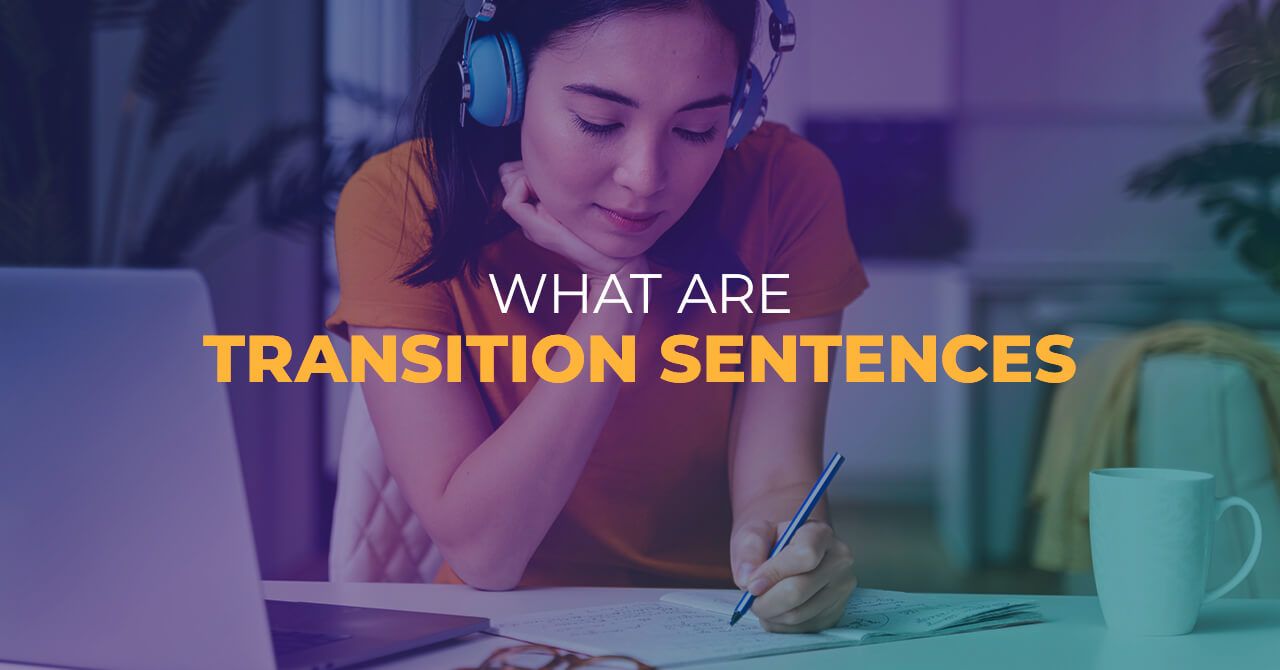
How to Use Transition Sentences to Make Your Writing Read Better
Transition sentences are like the bridge between two sentences or paragraphs. They help one idea transition to another, showing the reader what the link is between two parts of a text and making it more fluid and easy to read.
What is a transition sentence?
Transition sentences are like the bridge between two sentences or paragraphs. They help one idea transition to another, showing the reader what the link is between two parts of a text and making it more fluid and easy to read.
A transition sentence can appear either within a single paragraph or between two separate paragraphs. The transition sentences often introduce examples and other ideas when used within a paragraph. A transition sentence enables the reader to understand the link between the sentences on either side of the transition. In these cases, the transition can be one single transition word, such as however, therefore, or other linking words.
Full sentences are more likely to be used as transitions between paragraphs. The aim is to show how the main ideas of the two paragraphs relate to each other. The transition sentence appears either at the end of one paragraph or at the start of the next paragraph. Either way, it introduces the next paragraph by explicitly showing the relationship between the thoughts and ideas in the former and latter paragraphs.
Why should you use a transition sentence?
The transition sentence used can massively alter the point that is being made. Below you will see two sentences that are not linked by a transition word:
I go to Spain every year. I speak Spanish well.
Not only do we not know the writer’s point, but the sentences are also jumpy and not fluid to read. Next, you can compare the different points being made depending on which transition word is used:
I go to Spain every year. As a result, I speak Spanish well.
I go to Spain every year. Now I speak Spanish well.
I go to Spain every year. Overall, I speak Spanish well.
How to write a transition sentence?
The inclusion of transition words turns an ordinary sentence into a transition sentence. Transition words fit in different categories, depending on their purpose.
- Transition words to show similarity: also, too, just as, likewise, similarly.
- Transition words to show contrast: however, but, yet, nevertheless, despite, in contrast.
- Transition words to show sequence: first, second, third, then, next, finally.
- Transition words to show time: before, after, earlier, later, currently, during, meanwhile.
- Transition words to introduce examples: for example, namely, specifically, such as.
- Transition words for emphasis: in fact, indeed, even, of course, truly.
- Transition words to show position: above, below, here, there, beyond.
- Transition words to show cause and effect: hence, because, so, as a result, due to, consequently, therefore, thus.
- Transition words to add further information: in addition, what’s more, moreover, furthermore.
- Transition words to conclude: finally, in conclusion, to conclude, to summarize, on the whole, overall.
This list is not exhaustive. There are many other transition words that you can use to enrich your writing and make yourself understood more easily.
Transition sentences examples
Examples within a paragraph
Lucy was hungry because she skipped breakfast. However, she didn’t have time to eat before her next class.
John has dark hair and brown eyes. Likewise, his brother Dave has dark hair and brown eyes. In contrast, their sister has blonde hair and blue eyes.
Examples between paragraphs
Let’s take the example of an essay about the film adaptations of Shakespeare’s play “Romeo and Juliet.” The first paragraph is a brief presentation of Franco Zeffirelli’s film. The following paragraph summarizes the contrasting 1997 version, directed by Baz Luhrmann. A transition sentence between the two paragraphs could read as follows:
While the original film adaptation doesn’t veer far from Shakespeare’s original play, the more recent adaptation by Baz Luhrmann has a different, more contemporary take on the classic love story.
For our second example, let’s imagine we are writing up the results of a study on obesity. The first paragraph explains a correlation between the number of fast meals eaten per week and weight gain. The next paragraph lists the other potential causes of obesity. A transitional sentence must therefore show contrast:
However, the results of the study were inconclusive due to the large number of subject variables which could lead to a predisposition to weight gain.
Transitional sentence definition
To conclude, a good transition sentence shows the relation between parts of a text. These kinds of sentences make the transition from one idea to the next much smoother. As a result, the text is easier to read and understand.
Hello! My name is Beth. I'm from France. I'm a French and English native speaker and I really like writing.

